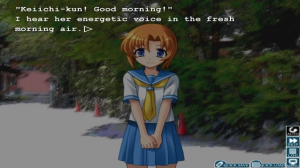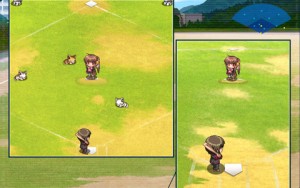What exactly qualifies as literature? A century ago, the answer to that question was pretty straightforward: novels, plays, short stories, poetry, creative nonfiction – basically any form of creative writing. Nowadays, many people (including myself) would argue that that list should be expanded to contain more modern forms such as movies, television, comics, and even video games, but humanity as a whole has yet to come to a consensus on whether or not these media belong in the same category as the works of history’s most revered writers. But the controversy doesn’t stop there; the line between what is and is not literature has recently become even more distorted with the advent of a new art form: the visual novel.
If you’ve never heard of visual novels, don’t worry; you’re not totally out of the loop. Right now, visual novels are not very well-known in the English speaking world due to the vast majority being produced in Japan, although in the past few years, more and more have been getting English localizations through the gaming website Steam, and others have fan translations that can be easily downloaded. What exactly is a visual novel, you ask? It’s a type of game, usually released for computers, but often available for platforms like Playstation and Xbox systems and mobile devices as well. The game tells a story, usually from the first person point of view, through text providing the narration and dialogue (which is often voiced), as images of the scenery and characters (generally in an anime art style) are shown on the screen and background music plays. Here’s a sample of what a visual novel might look like:

While some visual novels have linear storylines, most play similarly to a Choose Your Own Adventure book; the player, taking on the role of the protagonist, makes decisions which affect the ending of the story. These visual novels are intended to be played multiple times so the player can see each possible ending. This is what it looks like in Key Visual Arts’ “Rewrite” when the protagonist is asked whether he would rather change the world or himself:
Some visual novels focus almost entirely on the story and are really not much like video games at all, whereas others include gameplay elements as well. For example, my personal favorite visual novel, Key Visual Arts’ “Little Busters!”, is about a high school baseball team, and it includes a minigame in which the player can practice batting:
And then there are more traditional video games which include visual novel content as a secondary aspect of the experience, like KLab’s “Love Live! School Idol Festival,” which is primarily a rhythm game, but allows the player to unlock new chapters of a story upon completing gameplay-related goals.
So are visual novels literature, or is it misleading for them to even be called novels? It’s really a matter of personal opinion, but I think there’s something to be said for the fact that many visual novels evoke emotional responses in their players just as intense as the ones felt by the readers of traditional novels. Regardless of where you stand on the matter, it can’t hurt to try one out if you have some spare time.



R.A. Montgomery, who began publishing the Choose Your Own Adventure series in 1977, recently died at the age of 78. In the photo accompanying this New York Times obituary, he seems to be enjoying his iPad.